Join Martha Cartwright and her five birding companions on their intrepid journey to the East End of Grand Bahama (GB) Island one month after Hurricane Dorian. Their mission was to check on the status of the birds and habitats devastated by this monstrous Category 5 Hurricane. Martha paints a vivid and sobering picture of the “new normal” on GB for people and nature in the early stages of recovery.
I love birding on Grand Bahama, and I have a sweet spot in my heart for birding on the east end of the island. One highway runs from Freeport eastwards, but to call it a “highway” is a misnomer. It is two simple lanes, often potted with holes, and lightly traveled. It can be tedious, this road: mile after mile of Caribbean Pine trees and “bush” (our word for the native Thatch Palms, bushes, Century Plants, vines and orchids that grow under the pine trees). After rains there are usually pockets of standing water along the road; but there is never enough elevation to glimpse the beauty of the ocean, paralleling the road just off in the distance, nor the wetlands that are a hidden haven for birds of all kinds.
To love birding the east end, one has to learn to wait, to walk along unpaved trails in the pines, along miles of pristine beaches, around mangrove swamps…And let the birds slowly reveal themselves.
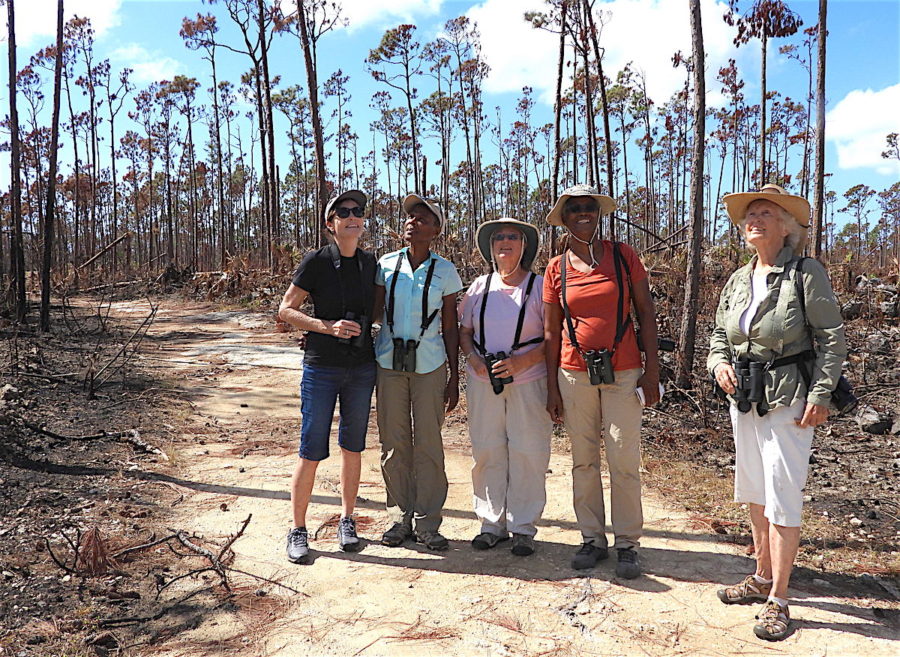
Three Days of Fear and Waiting
It was this same East End of the island that took the brunt of Hurricane Dorian, that slow-moving storm whose feeder bands we started feeling Sunday and who, if we were lucky enough to keep our houses, kept us inside until Tuesday.
From September 1 to September 3, for those three days, the world had been watching in awe and anguish the videos coming out of Abaco and Grand Bahama Island. Friends and family all over the world held their breaths, waiting with troubled hearts to hear that their loved ones had survived, waiting to hear if their homes were intact. For many of us in or near the storm without power, internet or cell service for weeks, realization of the devastation came in dribs and drabs. For me, the terrible news came mostly through conversations and shared stories, over the fence, waiting in lines, driving around or walking over debris to check on friends.
We heard grim stories of hours spent in the attic of flooded homes waiting for rescue, inspiring stories of courage as people on jet-skis headed over the bridge on Tuesday to rescue stranded families, sorrowful stories of the loss of family members – drowned or “missing.” Daily we watch news of global catastrophes – floods, fires, tornadoes. But when it is your own back yard that lies tattered and torn, emotions sit heavy in the heart and mind. The body keeps moving forward day by day, but the trauma burrows deeps and lingers.
#Grand BahamaStrong
While we were in the midst of the storm, thousands of rescue and relief organizations had already started to mobilize to bring in the necessities of survival. We saw the scenes on TV and the Internet and they were real. The disaster drills that rescue and relief organizations mobilized to bring in water, food, medical support, shelter, cadaver dogs. These organizations made good use of the millions of dollars donated for our recovery by caring people all over the world.
The people who work in humanitarian relief and rescue are amazing angels of hope and strength for the people whose lives they touch. Help from the outside gives local people time after a hurricane to take the initial steps towards recovery. We had to clear debris, salvage belongings, tend to businesses that were also damaged, and watch out for our neighbors. On Grand Bahama, we are so grateful to all who have helped and are continuing to help.
How Did the East End Fare?
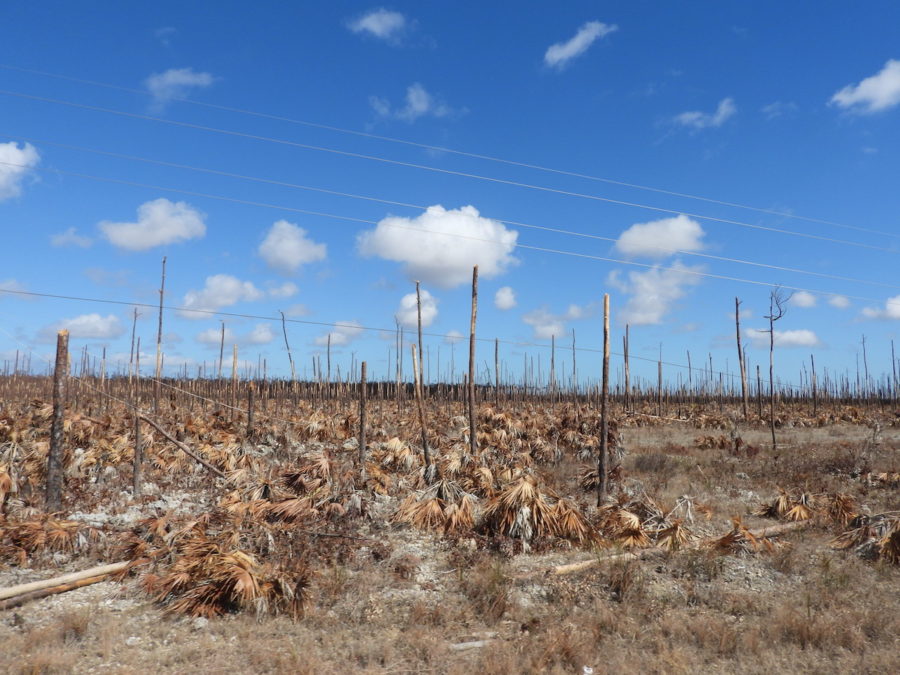
We wondered how our birds fared out east, but for the most part we kept our eBird recording to the Freeport area, where most of the Grand Bahama Island Birders (GBIB) live. It took us a month to gather a group of six for our initial survey of the birds out east. Roads that had been dangerous and nigh impassable except for relief trucks were now open. I wanted to go. I wanted to know about the birds, but truthfully, for days I dreaded the trip. People were still missing. Habitats were like moonscapes. Relief organizations were setting up camps, helping families, distributing supplies. People first. But what was happening to the birds?
Our Tour Begins With Many Questions: Owl Hole
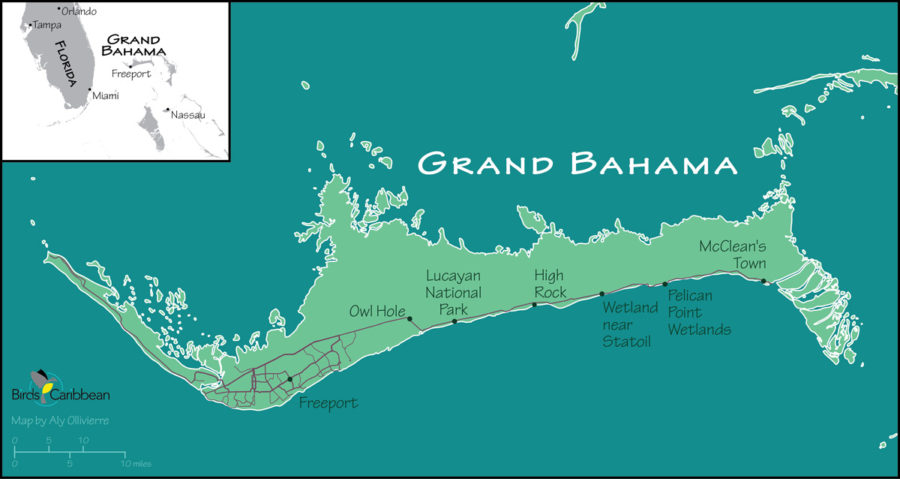
We stopped first in the pine barrens around Owl Hole Road. On one birding excursion in 2016, we had spotted 25 species for a total of 93 birds in the forest. It was home to the Common Ground-Dove, Yellow-billed Cuckoo, Cuban Emerald, Hairy Woodpecker, Western Spindalis, Red-winged Blackbird, Black-faced Grassquit, Blue-gray Gnatcatcher, Cuban Peewee, mockingbird, thrushes, vireos, and warblers.
Now, we were wondering. The Bahama Warbler is known only on Grand Bahama Island and Abaco – has it survived? The Bahama Yellowthroat is seen in other islands beside our two Northern Islands, so it has a better change of survival. The Caribbean Pine or Yellow Pine, native to the four northern islands of the Bahamas (Andros, Abaco, Grand Bahama and New Providence) is also the only known home to the Critically Endangered Bahama Nuthatch. How long will it be before we know whether that little bird, that endemic species has survived Dorian?
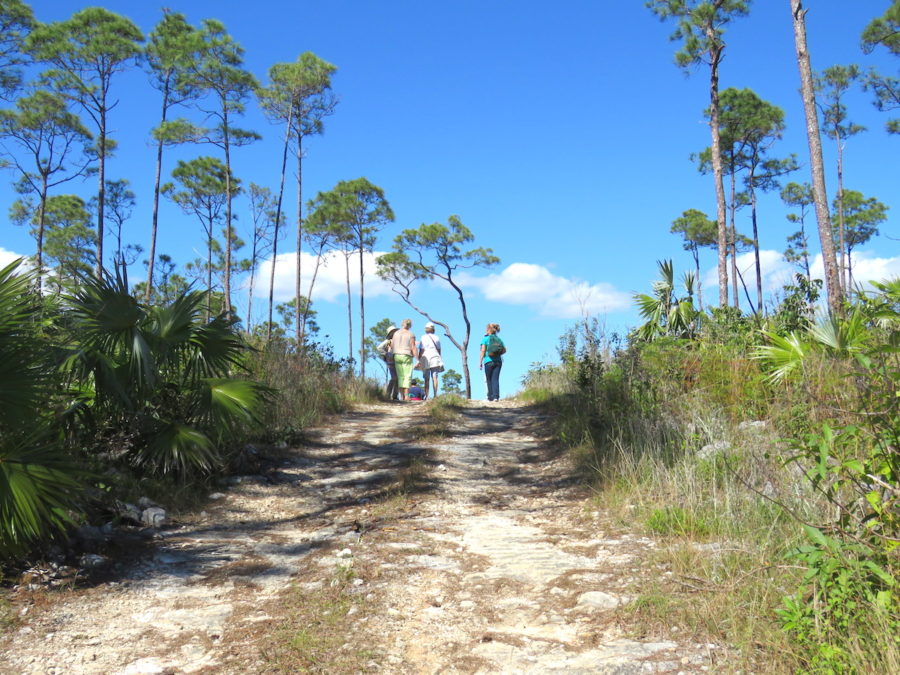
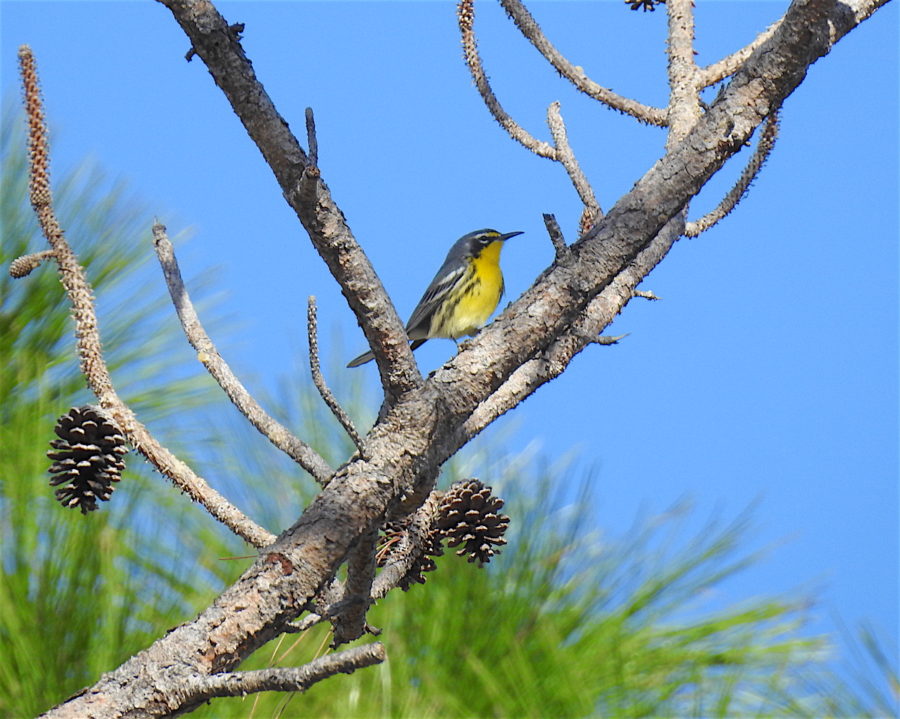
This post-Dorian trip at Owl Hole we spotted four species for a total of 11 birds: one Common Ground Dove (in someone’s yard), three Turkey Vultures, five Palm Warblers and two Prairie Warblers. We were ecstatic to see our first bird, a Palm Warbler! (Owl Hole eBird checklist)
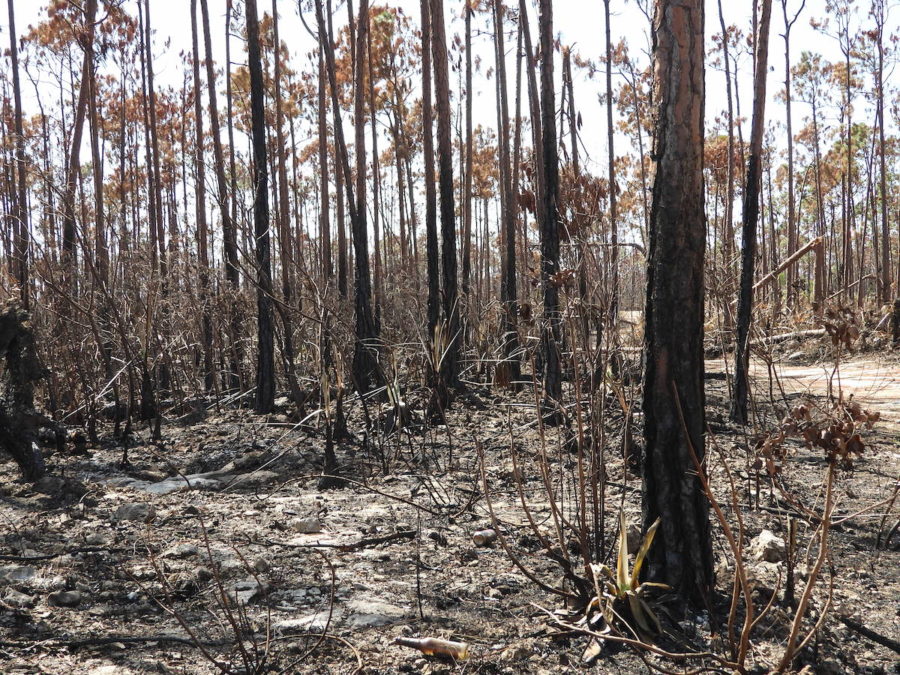
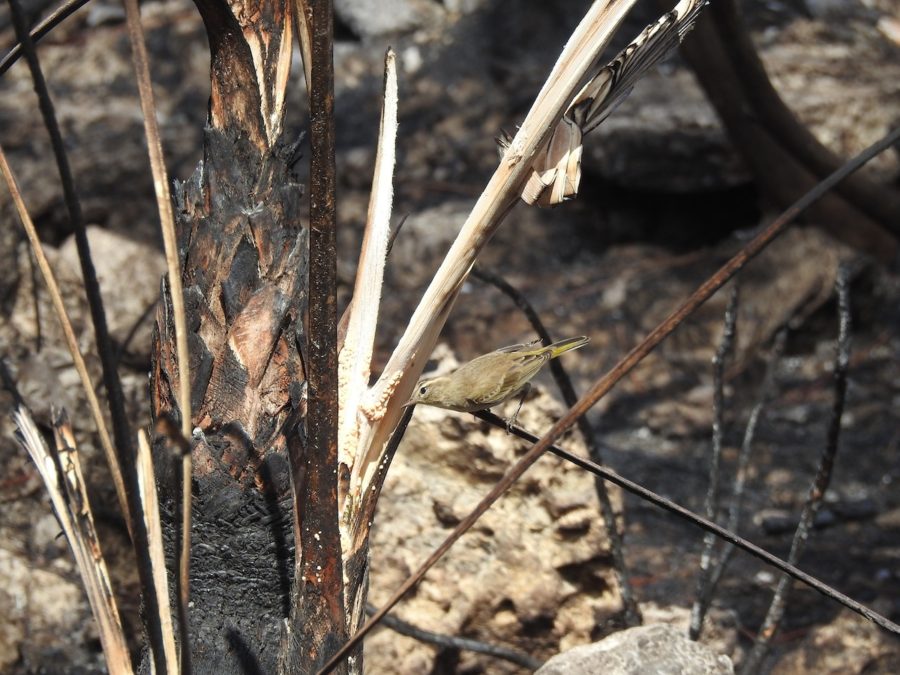
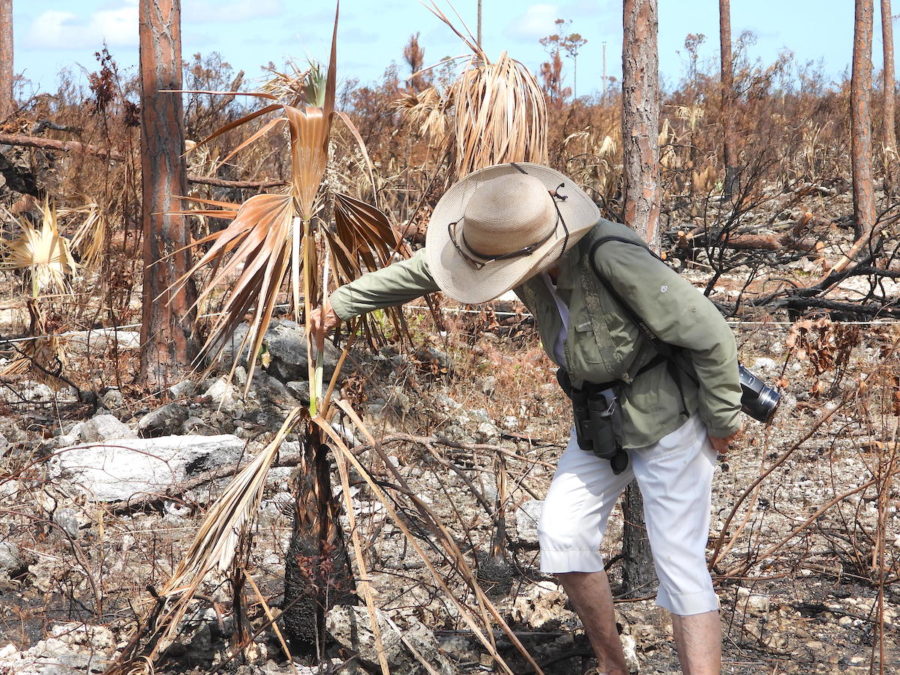
Some Encouragement in Lucayan National Park
Our next stop was the beautiful Lucayan National Park (LNP.) With the higher elevation around Ben’s Cave, no surge had flooded the Blackland Coppice. Recent rains had encouraged leaf growth. I saw my first Gray Catbird of the season. We marveled and took comfort in how quickly nature started to bring back her green mantle. One hundred and twenty-six species have been spotted in the Lucayan National Park. We walked the elevated Coppice area and saw just seven species, nine birds total. Not many, to say the least. (Lucayan National Park eBird checklist)
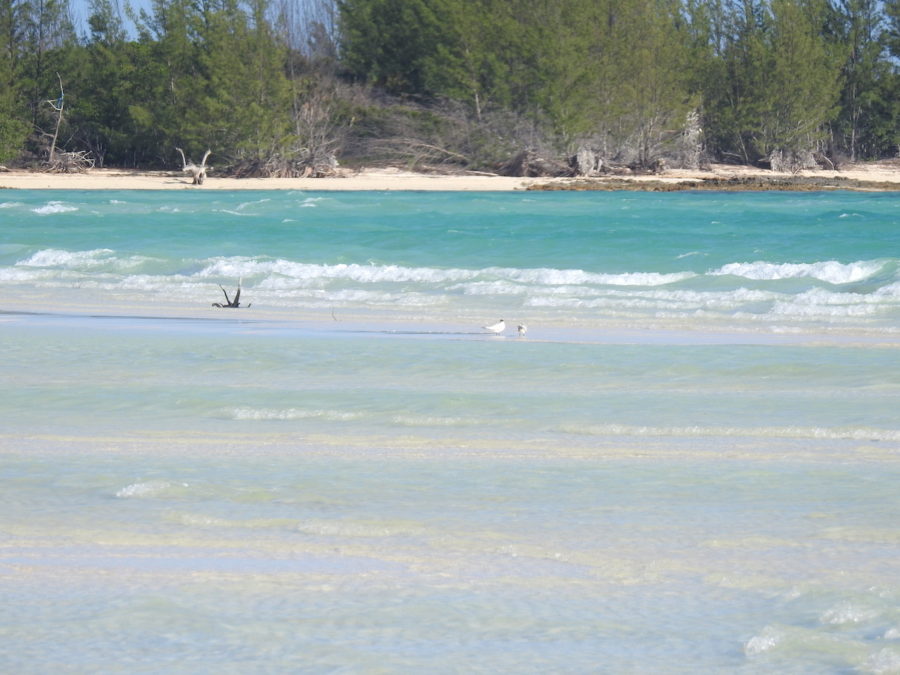
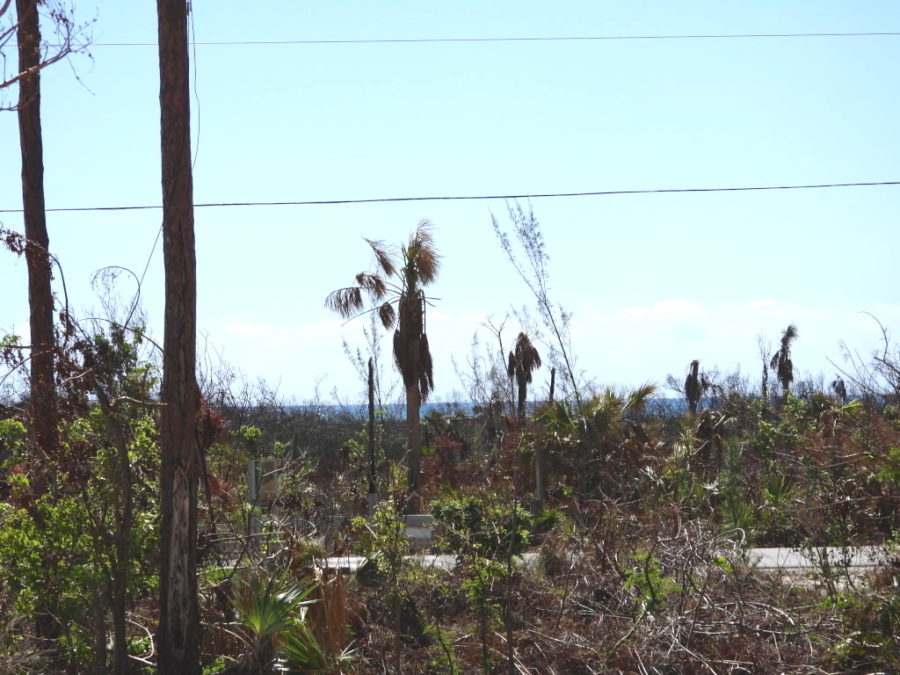
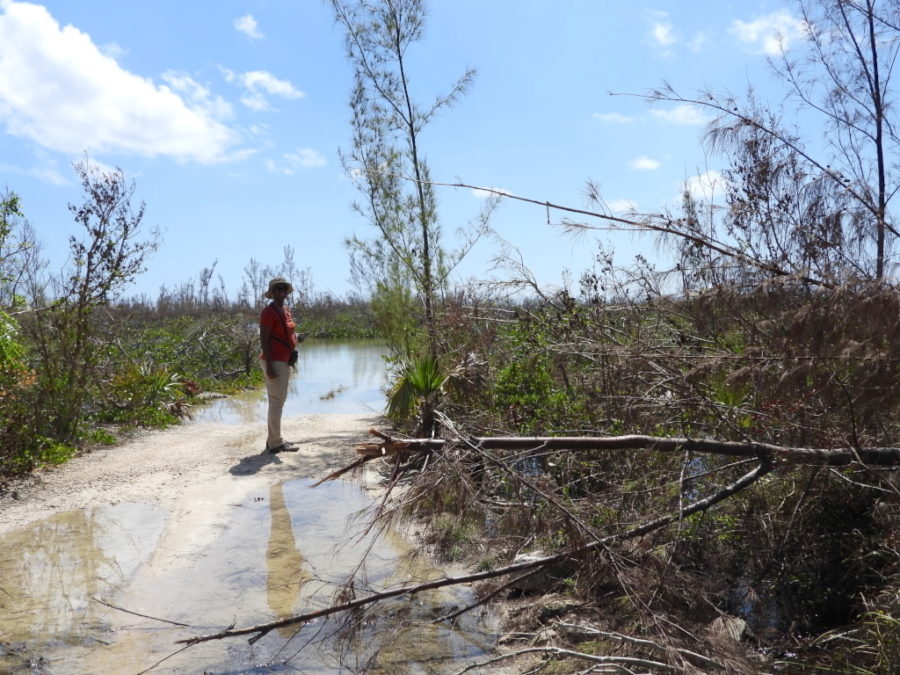
On to the Wetlands
One of my favorite birding spots out east are the wetlands that run just inland from the beach. They are almost hidden from view and difficult to access. With good rains, the wetlands run from west of the oil bunkers down to Pelican Point. I always smile to think of Anthony Levesque birding out there, opening the car door and standing on the edge of the door so that he was high enough to see into the wetlands. He would have preferred the roof, but Frantz and I insisted on the door frame. On this trip, we didn’t need to stand on any part of the car. The vegetation had been stripped. Despite the better views, there were not many birds in the area. Again there was jubilation at seeing a Tri-colored Heron and a Little Blue Heron!
(Wetland near Statoil eBird Checklist).
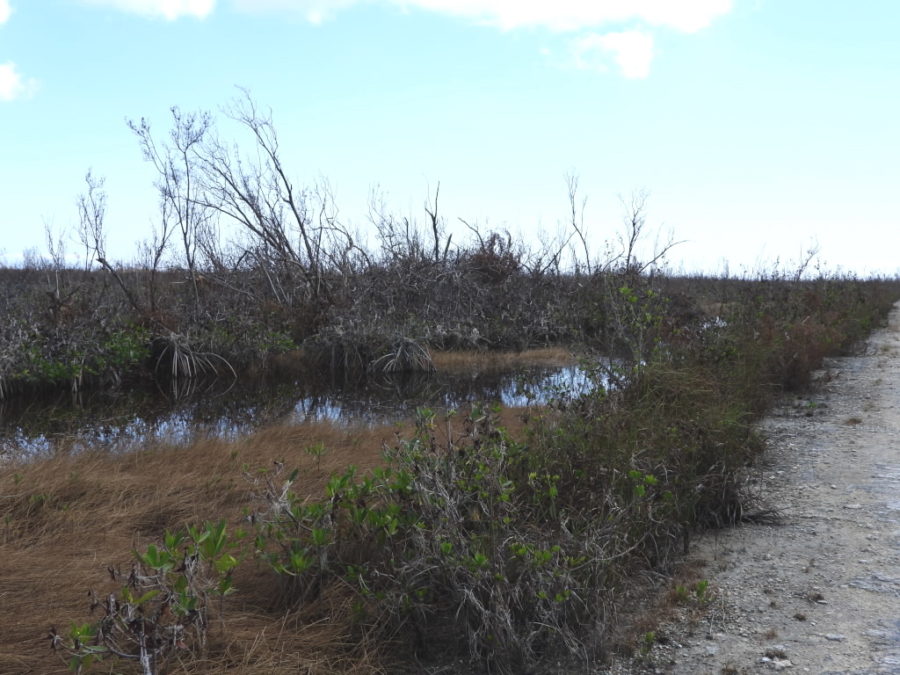
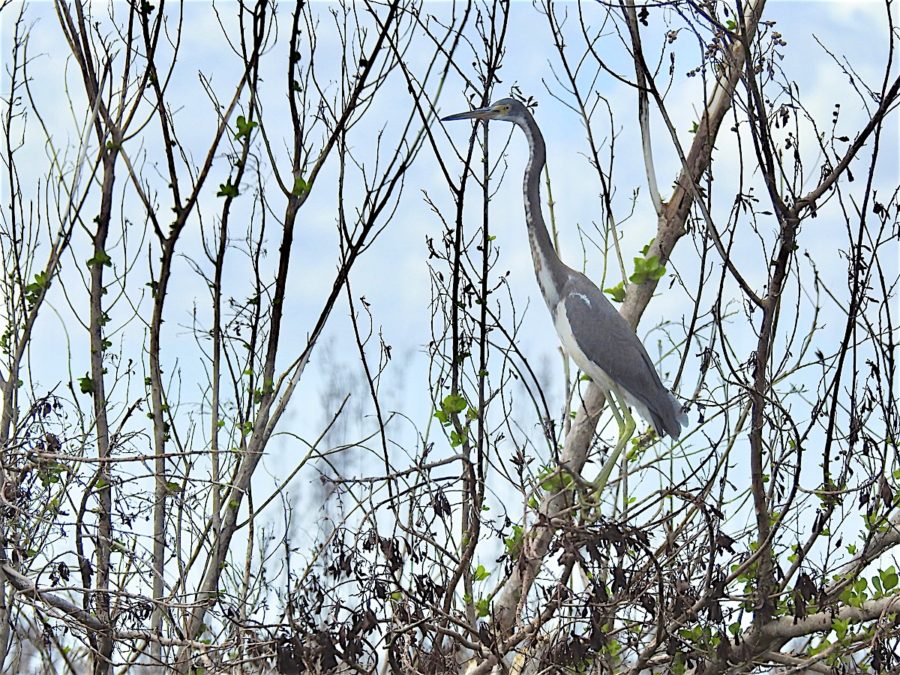
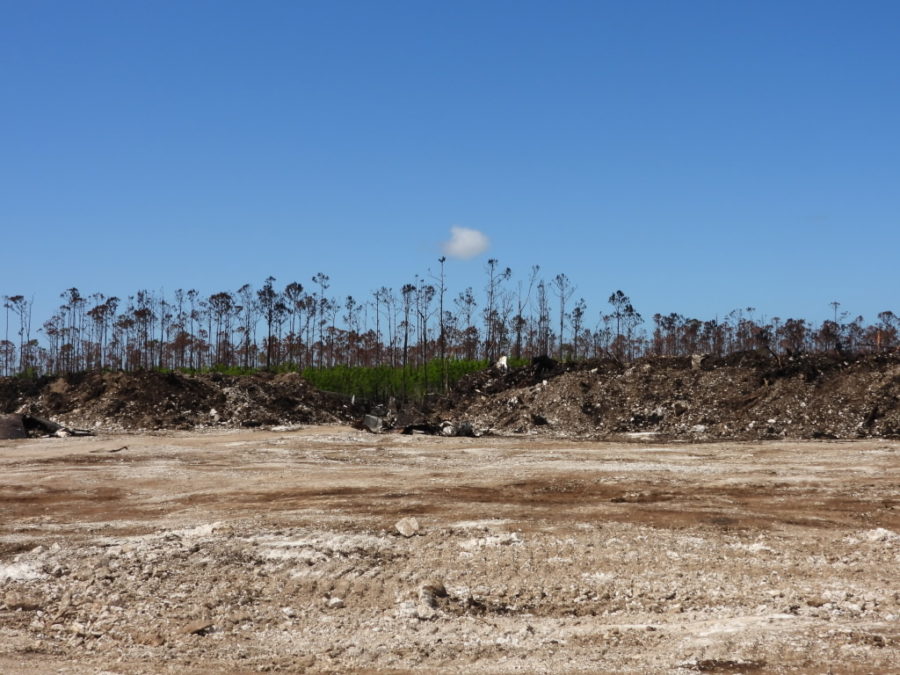
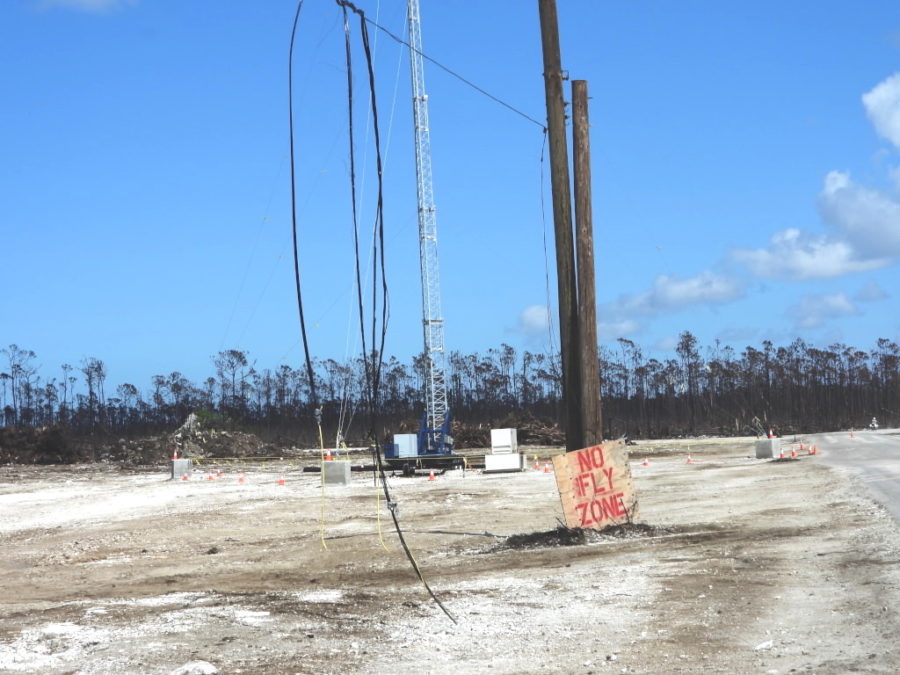
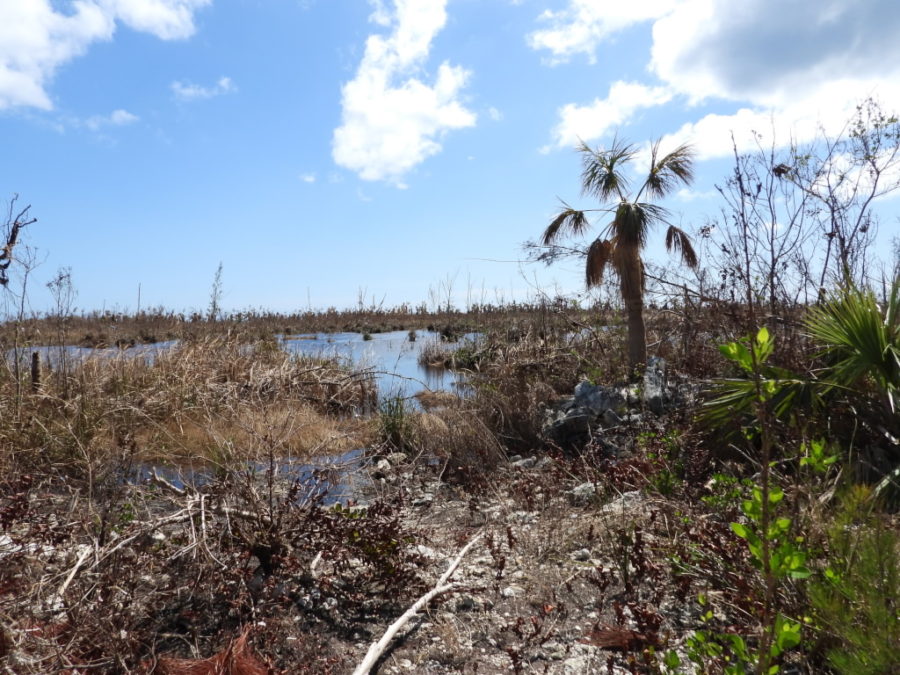
I love birding in the wetlands and on the beach at the “bend in the road” just before Pelican Point. The long, curving, isolated beach, with sandy shoals at low tide, is habitat for a variety of plovers, Sanderlings, American Oystercatchers, yellowlegs, warblers, egrets and herons. On this trip, no birds were spotted on the beach. Only a few Royal Terns and a Laughing Gull flew overhead. (Pelican Point wetlands eBird Checklist)
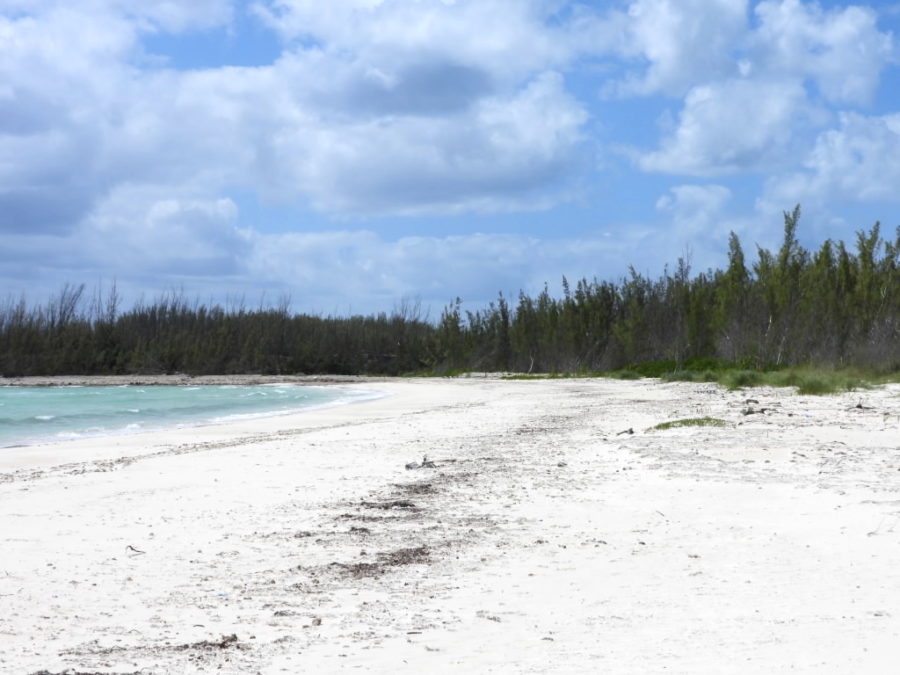
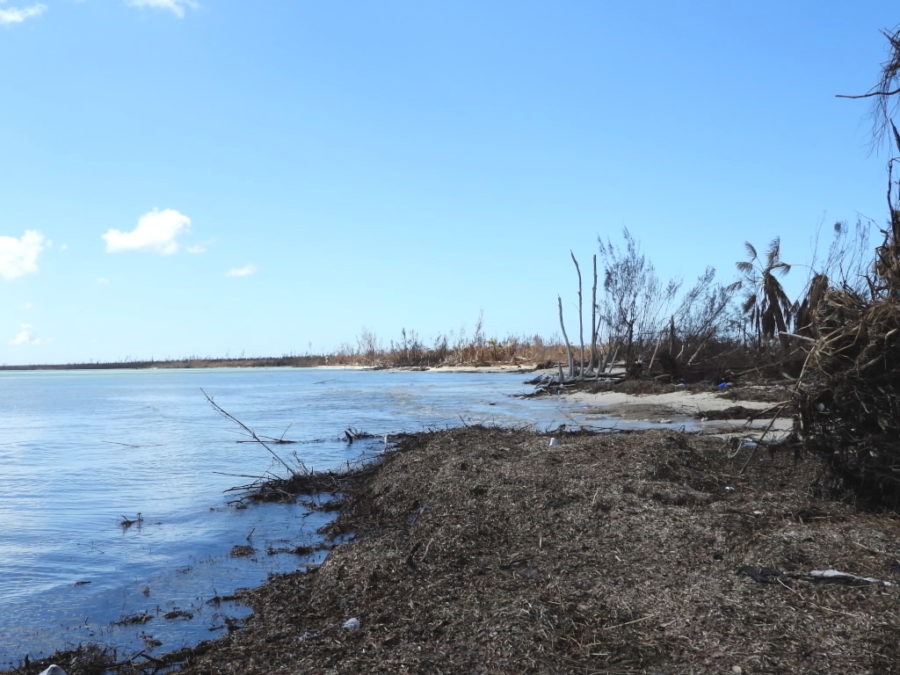
Pelican Point: A Scene of Destruction
Our final eastern destination for the day was what used to be the beautiful, idyllic shoreline settlement of Pelican Point, host to the annual Coconut Festival. Dorian had transformed it from a dynamic, well-tended little village into a warzone of rubble and gutted houses. We left relief supplies with a woman, who said that only three homes were still habitable in the area.
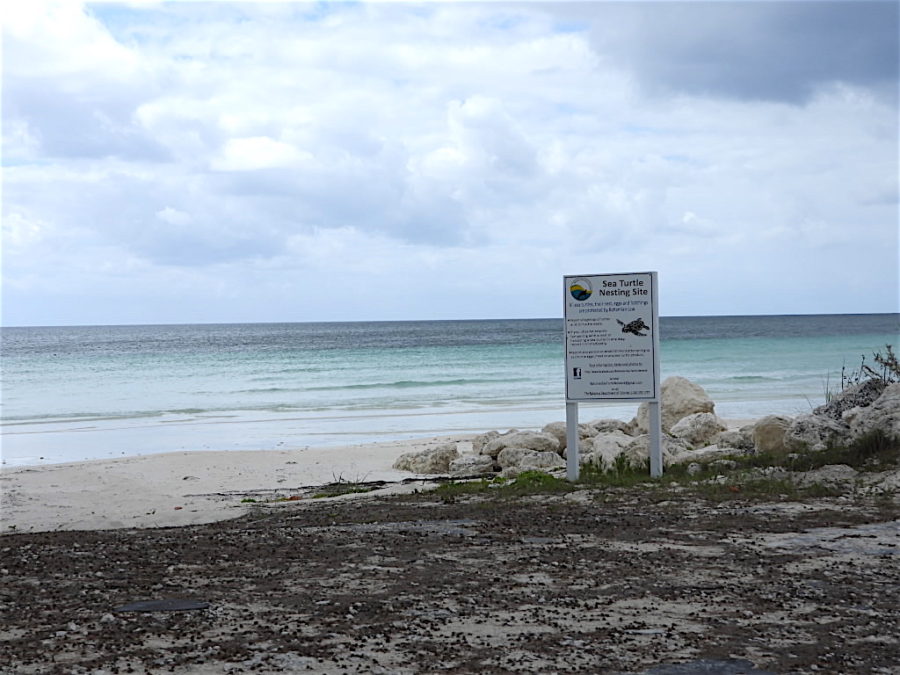
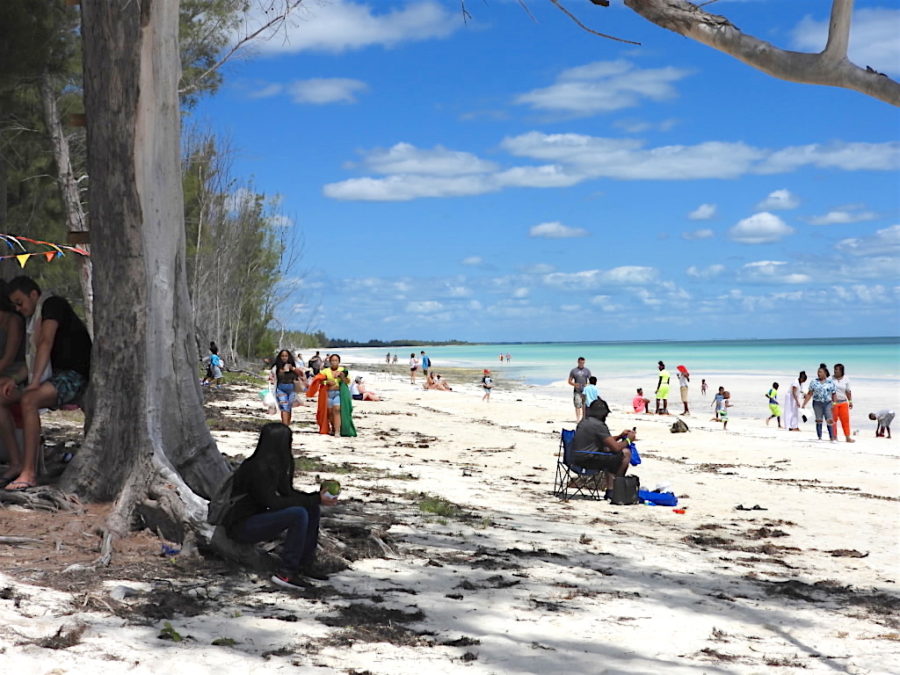
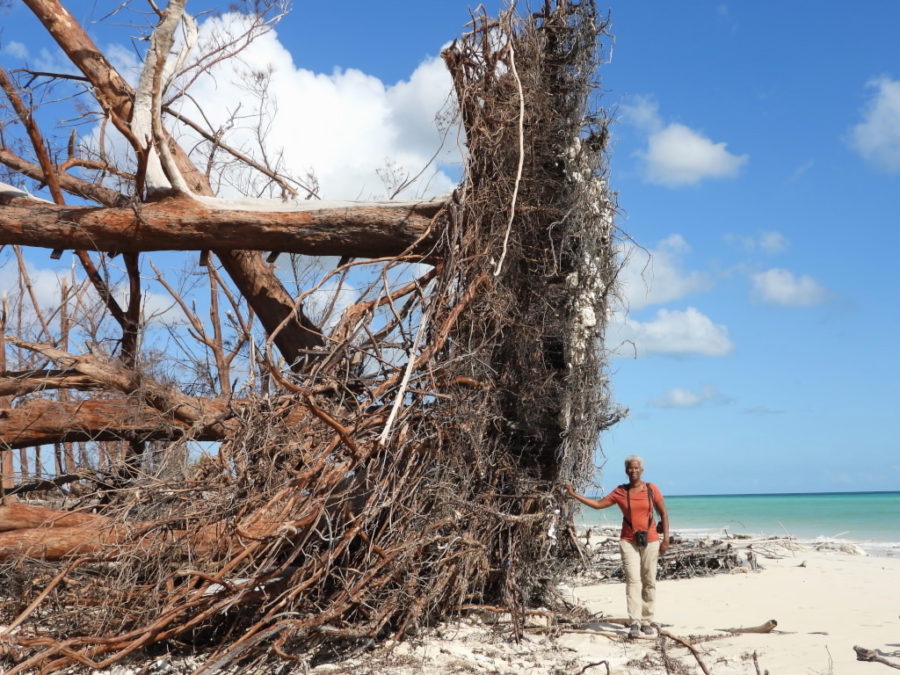
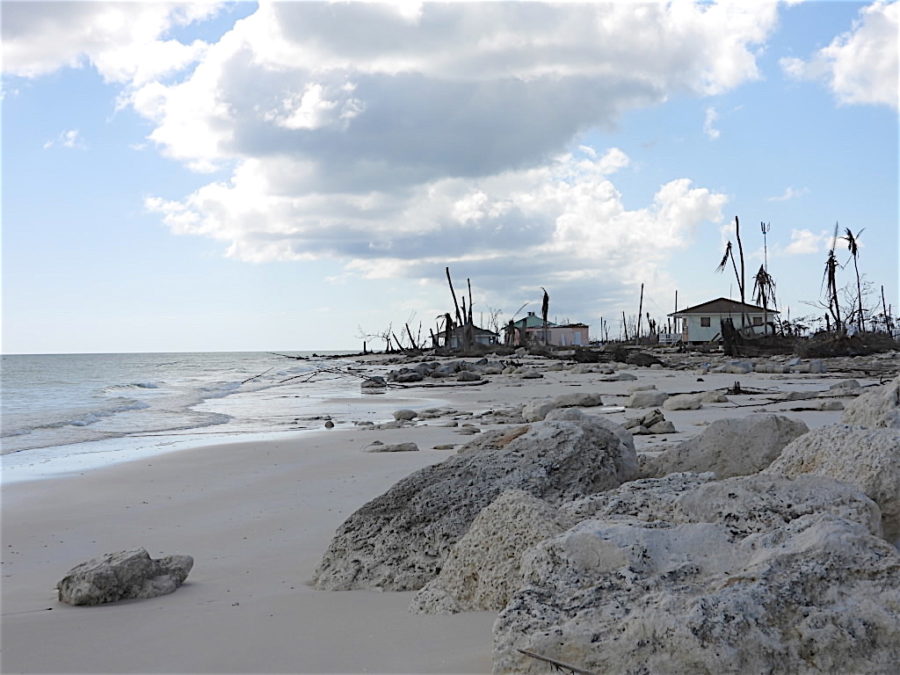
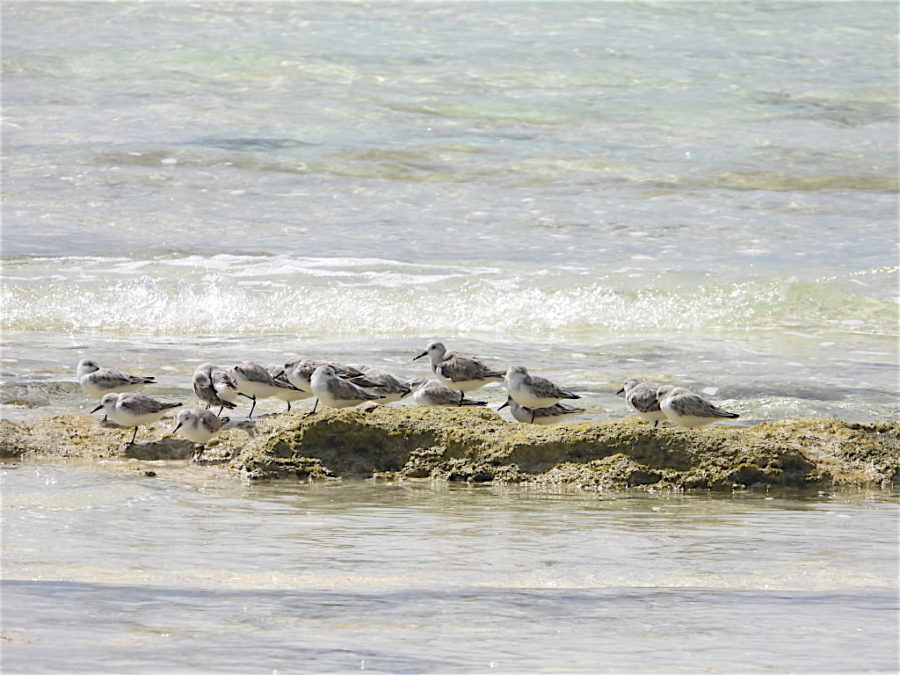
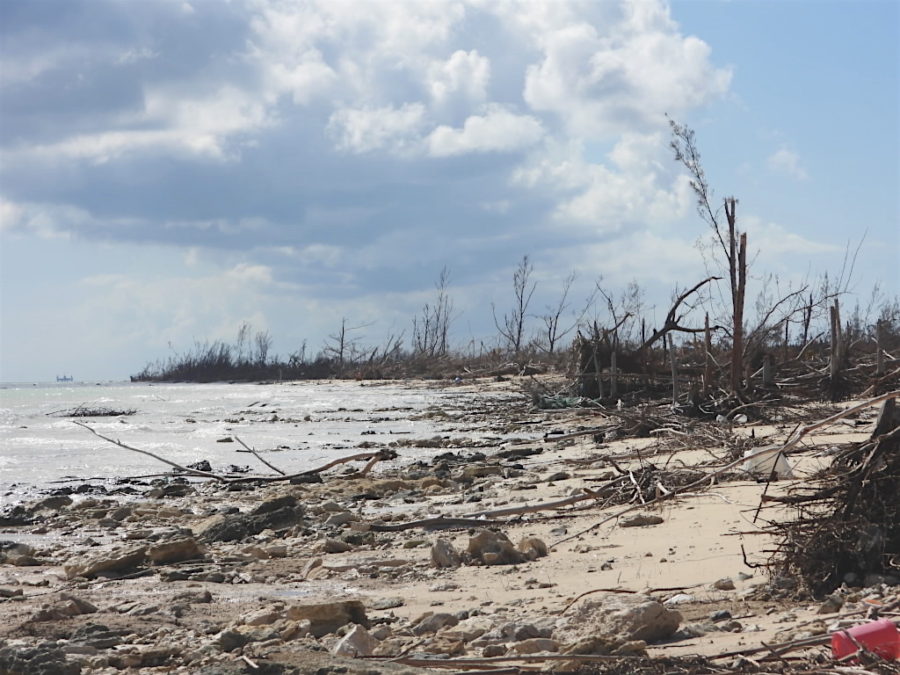
This past week, while waiting to fill my bottles at a water station at the Anglican Church, I met a Mr. Laing from Pelican Point. He had lost his home, but with a smile he told me that like all the families in the area he planned on rebuilding! Pelican Point was his home and would continue to be his home. Time and again I am humbled by the resilience and strength of island people.
A Visit to High Rock
Our last stop heading back home to Freeport was at Marilyn Laing’s home in High Rock. Being on the higher side of the main street, the house avoided the brunt of the storm surge. Marilyn is General Manager at the Garden of the Groves, and during the week, with assistance from Sanitation Services, she is working hard on restoring the gardens. On weekends she works to restore her home and community. We dropped the last of our relief supplies off with Marilyn, whose house has been a depot for relief goods in High Rock. She is a member of our Grand Bahama Island Birders group and well-known to BirdsCaribbean for her excellent education work with youth. And of course, while at Marilyn’s we lifted our binoculars to see the warblers flitting through the trees.
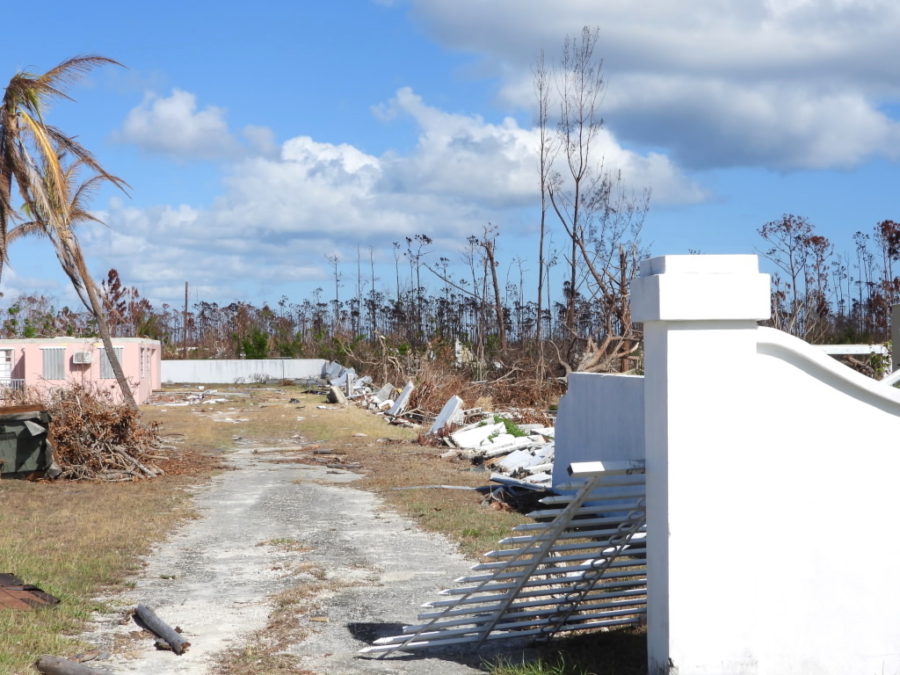
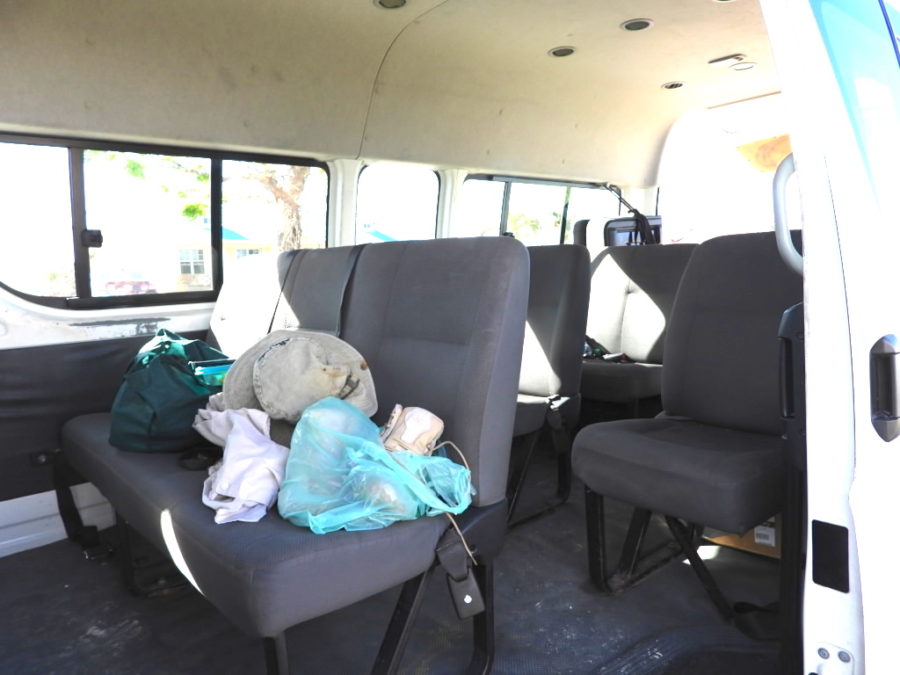
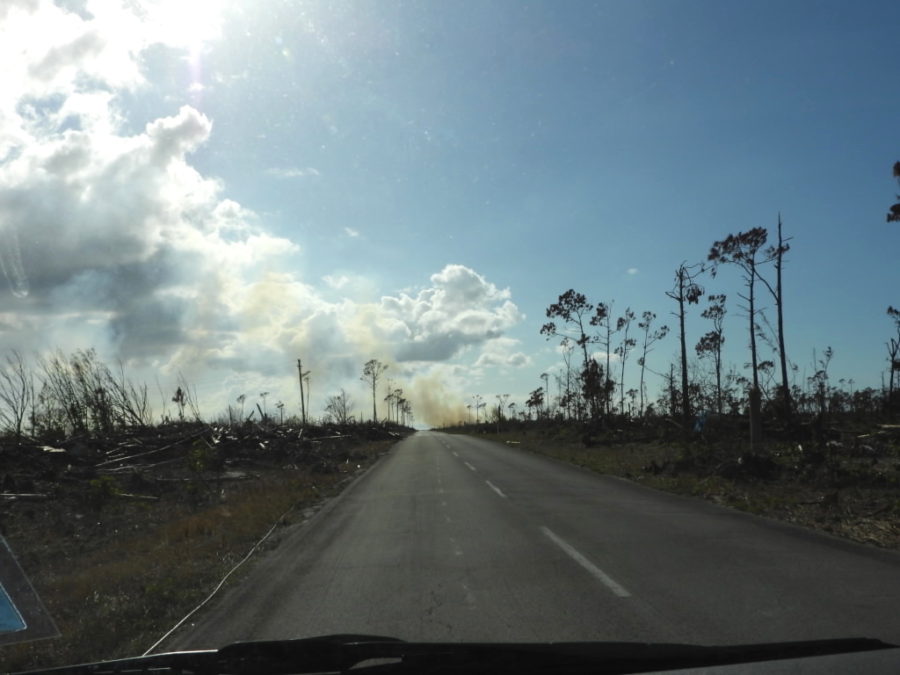
Recovery for Humans and Birds – and Some Rare Visitors
For some families in Grand Bahama, recovery will take years. For others, life seems almost “normal,” if you don’t visit certain parts of the community. Businesses and families are working hard to rebuild. (We do miss and need our tourists!)
And for the birds? It was sobering, but not surprising to see so few birds out east. Their instinct is for survival, and food is fundamental. Thanks to donations from BirdsCaribbean, our Grand Bahama Island Birders group has been distributing seed feeders and bags of wild bird seed, as well as hummingbird feeders and red nectar concentrate to anyone wanting to help our birds. Many people want to help our birds by making food available. Sarah left yoga class this morning with a seed feeder and a bag of seeds, asking, “May I take some more nectar?”
Again, thank you, Birds Caribbean.
Post-Dorian birders have been recording rare birds to the islands, perhaps vagrants after the hurricane. I’ve been excited to see a Hudsonian Godwit and a Yellow-headed Blackbird. Late yesterday afternoon, a Barn Owl sat in Erika’s garden long enough for us to get a good look at this normally elusive resident.
Playing Our Part…While the Birding Continues
What about habitat recovery? The Bahamas National Trust, in a recent article in the Bahamas Tribune, indicated that it would begin to conduct “comprehensive assessments to determine the impact of Dorian on wildlife.” We are happy to hear this. I encourage environmentalists and scientists worldwide to travel to these storm-ravaged habitats to assess the damage to water, soil, plants and animals; to search for our fragile endemic species; and to recommend steps to enhance recovery and minimize damage from future hurricanes.
Bird feeders, seeds, and nectar are a welcome start, but more will need to be done. I encourage BirdsCaribbean to continue their work. I implore the National Audubon Society, The Nature Conservancy, American Bird Conservancy, BirdLife International, Manomet, The World Wildlife Fund, and all other groups dedicated to the conservation of birds to assist BirdsCaribbean and Bahamas National Trust with our recovery.
As local birders, we will continue what we love to do…bird! We will report our findings to eBird Caribbean and the International Shorebird Survey (ISS). We will continue to distribute feeders and food for the birds. Mother Nature has already started to do her recovery work; no self-pity, no complaints, she will continue. Now it is time for each of us to insist that our governments and leaders take seriously the detrimental effect of climate change on our planet – and do their part. If you are reading this article, I am sure that you must care. You care deeply. I hope my story of the birds of East Grand Bahama after Dorian will encourage you to continue to act. You must know that your efforts will be appreciated, and are important.
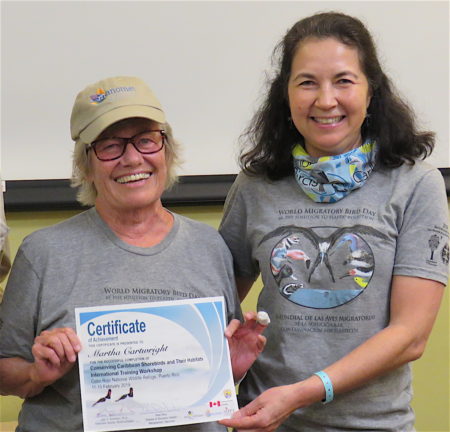
It’s raining now as I finish this article. Since our normally potable tap water is still salty, I stop to put out large coolers to catch the rainwater for my plants and bird bath. From my desk I spot a Smooth-billed Ani up in the fig tree. Oh, and two Eurasian Collared Doves.
Goodbye for now, from Grand Bahama – an island in recovery.
Martha Cartwright has been an avid birder on GB since 2014. She is particularly fond of shorebirds and participated in BirdsCaribbean’s Conservation Caribbean Shorebirds Workshop in Puerto Rico last March. Together with bird guru-in-chief, Erika Gates, and their close group of Grand Bahama Island Birders, they regularly carry out birding excursions and counts in many habitats on GB and also do a lot of habitat restoration, outreach, and education about birds and nature on the island.
BirdsCaribbean is extremely grateful to all who have donated to our Hurricane Dorian Recovery Fund; donations are providing bird seed, nectars and feeders, replacing equipment and infrastructure lost in the storm and helping to fund bird and habitat surveys and restoration in Grand Bahama and Abaco. We are working with the Bahamas National Trust and other partners on this recovery work. Please click here or here if you would like to help with this work.
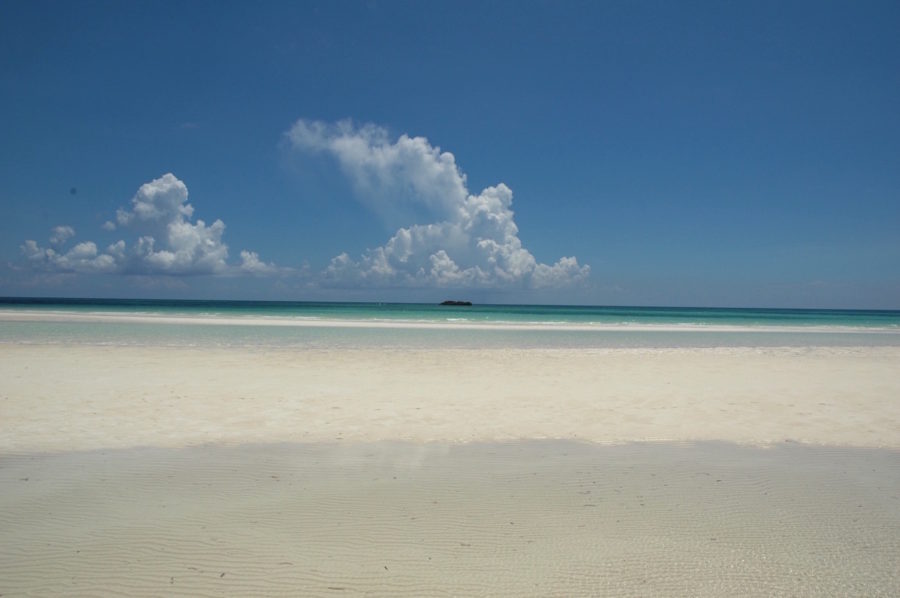


Thank you for your work.
Thank you, Sharon, for your kinds words. And thanks to all of our donors and members who support our work!
Thank you for sharing such a detailed update (with photos). It’s so important to document what we can of the impacts and recovery of the native vegetation and birds. Thanks to everyone who is donating and supporting the Bahamas!
Thanks for you comment, Judd! We appreciate your interest and concern, and also remember well your awesome help with our hurricane recovery efforts in 2017 from the double whammy of Hurricanes Irma and Maria impacting 17+ islands.